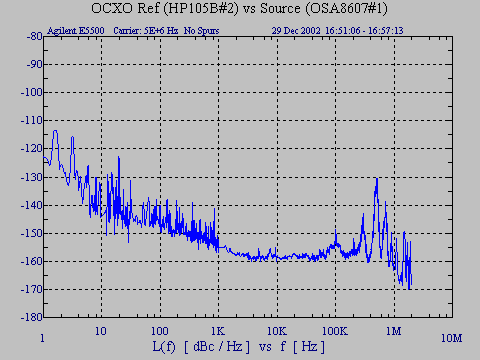
| LeapSecond.com :: Museum of Precise Time & Frequency |
|
|
| Agilent E5500 Phase Noise Measurement System |
|
|
The following note documents my experience with a E5500B Phase Noise Measurement System.
I was able to get a surplus Agilent E5500B this year. It was shipped in as-running condition with all the instruments, cables, and pre-configured PC. It took several hours to read the manuals and set the whole thing up.
There is a E5500 self-test which is useful to run first.
The E5500 can be used to measure the phase noise of just about any RF source. But in my case I only need to use it for 2.5, 5, and 10 MHz frequency standards.
Like every other frequency comparison system you need a reference against which you measure the UUT (unit under test), called the source here. Both the reference and the source must be the same nominal frequency (e.g., both 5 MHz or both 10 MHz). One of the two must have EFC control. Based on whim and short-term Allan Deviation plots I selected my best HP 105B quartz oscillator as the reference for the first set of tests. The 105B has good phase noise and a rear EFC input with a documented gain of about 4E-8 [1] over -5 to +5 V, or about 0.02 Hz/Volt [2]. A later goal is to identify the lowest phase noise source and permanently use it as the reference.
Hint: If the PLL doesn't lock easily tune the reference or the source as close to 5 MHz as possible. Free-running oscillators may drift out of lock range if left for months or years.
The following are the results of several sources. I did three runs for each source and visually inspected the plots for consistency [3].
| Oscilloquartz 8607 BVA OCXO (HP105B #2 reference) |
 |
| Kvarz CH1-76 Passive H-Maser (HP105B #2 reference) |
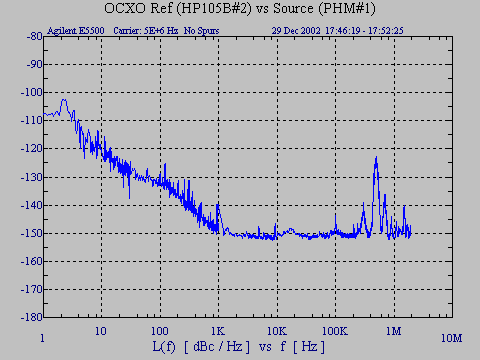 |
| Kvarz CH1-75 Active H-Maser (HP105B #2 reference) |
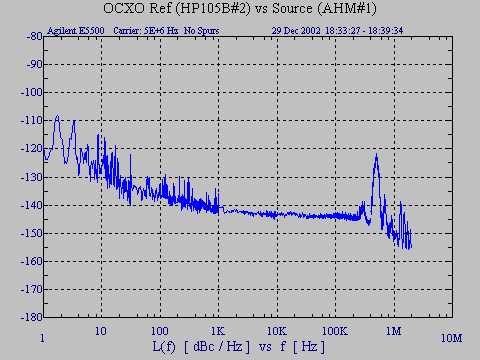 |
| Datum Sigma Tau AOG (HP105B #2 reference) |
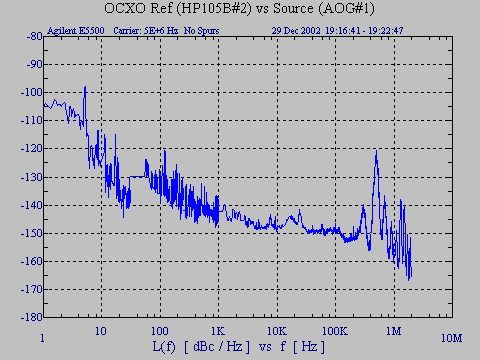 |
| HP 105B (HP105B #2 reference) |
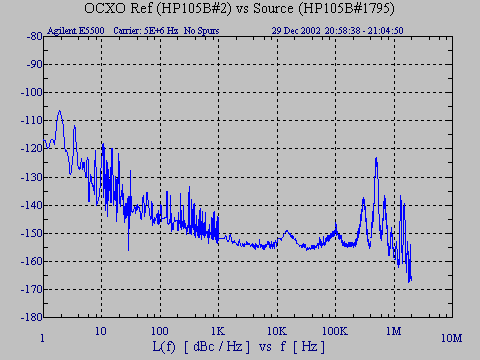 |
| HP 5061A (HP105B #2 reference) |
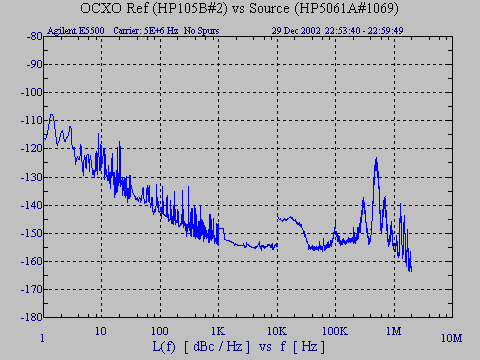 |
One way to get a feel for the similarities and differences among the plots is to combine them into a 1 fps movie.
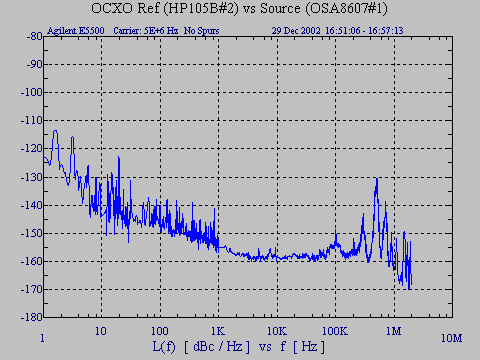 |
Another way to compare the sources is to reduce the plots to a table.
Q: How do you come up with a single number based on these relatively fuzzy plots?
| Source | 1 Hz | 10 Hz | 100 Hz | 1 kHz | 10 kHz |
| OSA 8607 | -123 | -155 | -159 | ||
| CH1-76 | -108 | -150 | -152 | ||
| CH1-75 | -121 | -140 | -143 | ||
| AOG | -105 | -143 | -148 | ||
| HP 105B | -117 | -152 | -153 | ||
| HP 5061A | -116 | -153 | -153 |
[1] Some HP 105B manuals have a "more than 4E-8" EFC tuning spec; others 2E-8. It also appears from the schematic that the front-panel manual fine adjustment has an effect on the rear EFC tuning constant. In any event, the E5500 measures the actual value so the published spec is not important.
[2] The E5500B measured the VCO tuning constant of my HP 105B as 0.032 Hz / Volt.
[3] The plots were captured with a screen copy (ctrl-c) from the E5500 UI. The images were then pasted (ctrl-v) into a graphics editor and saved to disk in GIF format. By iteratively adjusting the size of the E5500 UI window one can end up with standard sized plots, such as 640x480 or 480x360.